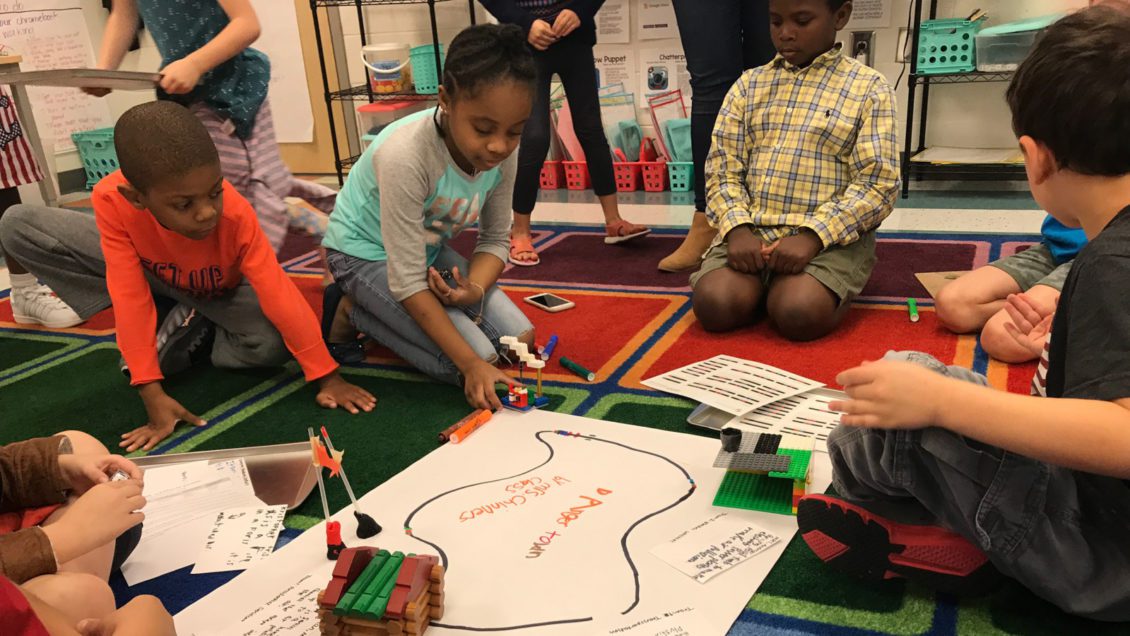
CLEMSON — A faculty member in Clemson’s College of Education has coauthored a new book, “An Educator’s Guide to STEAM: Engaging Students Using Real-World Problems.” The book aims to help readers better understand the STEAM framework in education, which is an educational approach that incorporates science, technology, engineering, the arts and mathematics.
Danielle Herro, associate professor of digital media and learning at Clemson, coauthored the book with Cassie Quigley, associate professor of science education at the University of Pittsburgh. Herro said that after years of working with hundreds of classrooms teachers on best practices in implementing STEAM education, it became apparent that a guidebook would be beneficial to reach an even broader audience.
“STEAM is often project-based and very hands-on, and it is an effective way for educators to teach problem-solving that is relevant to students’ lives. We noticed how much most teachers loved and believed in it, but we also noticed how they struggled to conceptualize it,” Herro said. “We have worked hard to provide a research-based book that is accessible to a broad audience of educators.”
The sample units and activities in the book offer a blueprint for effective instruction that applies to teacher educators, STEAM researchers, administrators, instructional coaches and classroom teachers, especially those in grades K-8. Units are based on offering students a scenario with a relevant, local and real-world problem to solve that involves a variety of relatable disciplines.

Herro likes to use the example of teachers in coastal regions creating units around extreme weather, plastic pollution or threats to sea turtles, to name a few. Students are given a problem they can relate to, which increases their interest in engineering solutions. Herro encourages educators to include experts from the community in lesson plans to help students further understand real-world solutions.
STEAM has been shown to be effective in engaging students, but like any innovative practice there are challenges associated with successful implementation. Teachers require flexibility in time, pacing and policies as well as dedicated resources for planning.
“We see STEAM learning as something for all kids in all classrooms, but without some flexibility, STEAM is often relegated to narrowly focused, after-school programs that are disconnected from the normal curriculum,” Herro said. “Hopefully, this book can help push STEAM into the mainstream or at least call attention to what is required of schools and districts to make these types of lessons possible and more commonplace.”
Herro and other faculty members in Clemson’s College of Education long have been associated with their expertise in training teachers in the use of the STEAM framework. In late 2017, the college’s STEAM education endorsement became the first of its kind in the U.S. The endorsement was the culmination of years of work by multiple faculty members, including Herro and Quigley, and it acts as a seal of approval for recipients of Clemson’s STEAM teaching certification.

According to Herro, the STEAM classes offered as part of Clemson’s Master of Education in Teaching and Learning are directly aligned with the instructional model STEAM unit development the book walks readers through.
STEAM certainly has a future as part of Clemson’s training of future educators and Herro sees the “A” for arts in STEAM as a vital way for educators across the country to inject a social or humanitarian dimension to STEM education. She sees STEAM as an appealing way to increase participation in STEM fields in early grades that extends through to the workforce.
“STEAM really equates to good teaching and interesting learning for students to solve pressing problems,” Herro said. “In our experiences, educators and their students have reported that they love teaching and learning in this way, so I see STEAM only continuing to gain momentum.”
“An Educator’s Guide to STEAM: Engaging Students Using Real-World Problems” was released March 29 by Teachers College Press and is available in paperback and hardcover formats. For more information on the book, click here.
Get in touch and we will connect you with the author or another expert.
Or email us at news@clemson.edu

